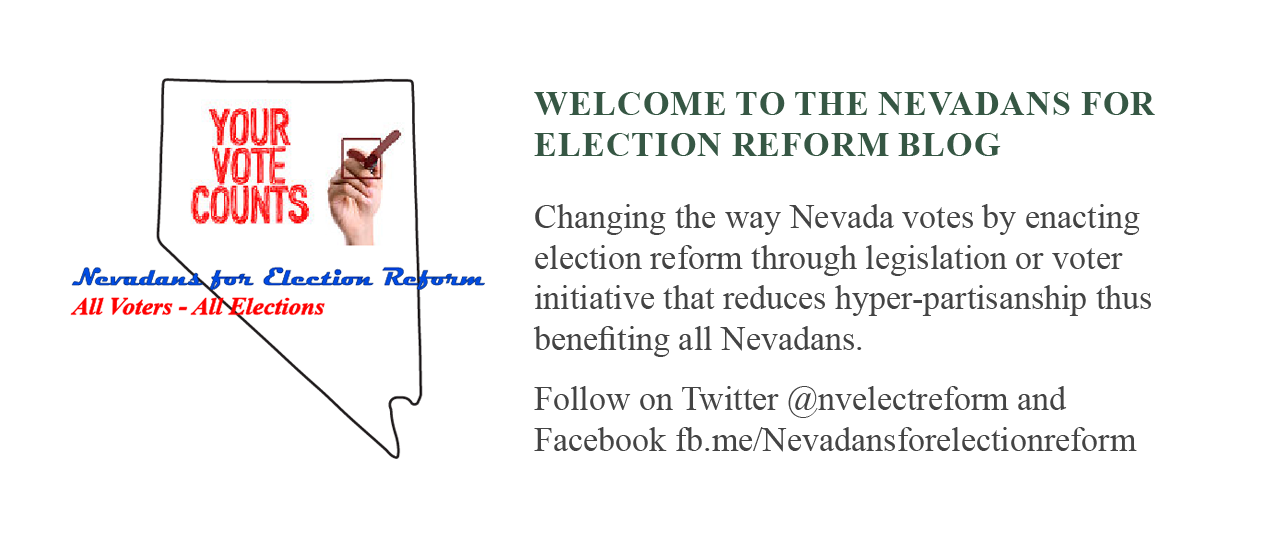48 out of 1294 Bill Draft Requests (BDRs). 40 out of 1075
bills and resolutions. These numbers represent the legislation relating to
elections dealt with by the just completed session of the Nevada Legislature.
What was the outcome?
Five bills became law. Two of these were measures applying
only to Carson City; If a candidate receives a majority of votes in the primary
election for a non-partisan office, that candidate is considered elected and
Clark County; requiring members of advisory boards in counties having a
population of more than 700,000 to be elected. One changed expenditure
reporting requirements and related matters. The other two bills could be
considered major changes. AB 94 allows for sample ballots to be provided to
voters via electronic means. This will save counties significant funds and
brings the dissemination of information to a method preferred by today’s
voters. AB 94 passed both the Assembly and Senate unanimously. SB499 extends
the date by which third-party and independent candidates must file nomination
petitions. This bill settles a law suit brought by the Green Party. By
extending the date, it affords these candidates greater ballot access. (Note:
SB 499 was originally filed as a modified top-two primary but stripped and
amended in committee).
Seventeen bills were passed by committees in one or both
chambers and died either on the floor or in Ways and Means / Finance
committees. These bills dealt with everything from font size of print on
election material to voter ID and presidential primaries. In addition to voter
ID and presidential primaries other significant bills that died in this group
included a constitutional amendment calling for the Governor and Lieutenant
Governor to be elected as a slate, candidate residency requirements and
increase penalties for violation of these requirements, and a requirement
calling for voter registration workers to register with election officials.
The remaining eighteen bills did not receive a hearing in
either the originating chamber or second chamber. These bills included issues
on voter fraud and ID, ward voting in certain city primary elections,
appointment of a reapportionment commission, a voters’ bill of rights,
restoration of voting rights to felons, and appointment of school boards.
Looking at the 40 bills that were considered, many that died
would have allowed Nevada to make significant improvements in its election
process. Whether they died because of fiscal requirements, partisan divisions,
or simply got caught up in the political gamesmanship that is a legislative
session is hard to pinpoint. It will be interesting to see how many of these
bills come back for the 2017 session and what happens to them then.
